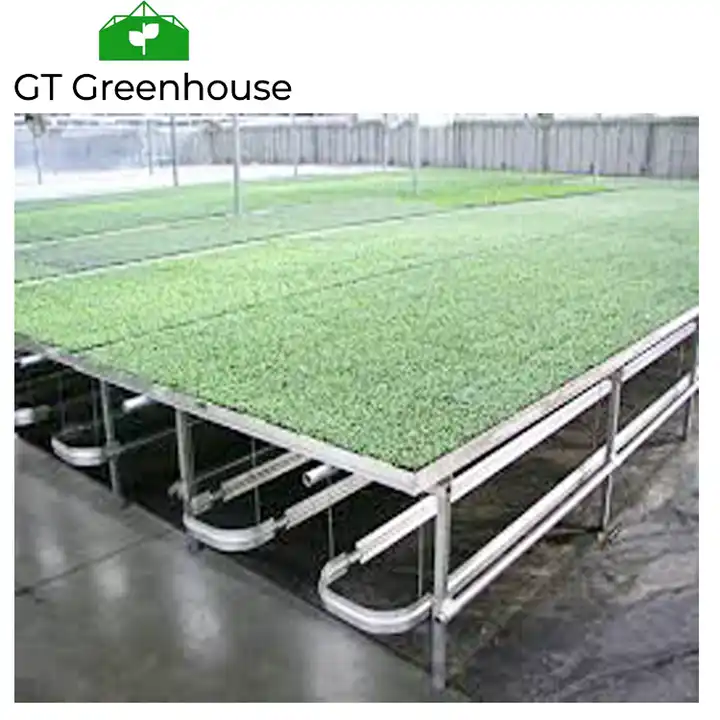Greenhouse farming has become increasingly popular due to its ability to create controlled environments for crop cultivation. To effectively manage a greenhouse and optimize crop production, specific equipment is essential. In this article, we will explore the key equipment required for efficient and productive greenhouse farming, highlighting their functions and benefits.
Climate Control Equipment
- Heating System:Greenhouses often require supplemental heating to maintain optimal temperatures, especially during colder months. Heating systems, such as gas heaters, radiant heaters, or geothermal systems, help regulate the temperature and create a favorable environment for plant growth.
- Cooling and Ventilation:
Proper ventilation and cooling are crucial for preventing heat stress and maintaining airflow within the greenhouse. Equipment like exhaust fans, evaporative cooling systems, and automated vents help remove excess heat, humidity, and stale air, creating a comfortable and healthy environment for plants. - Shading Systems:Shading systems, such as shade cloths or retractable screens, are used to control light levels and protect crops from excessive sunlight. They help prevent heat buildup, reduce the risk of sunburn, and enable growers to create specific light conditions required by different crops.
Irrigation and Water Management Equipment
- Irrigation System:Efficient and precise water delivery is essential in greenhouse farming. Various irrigation systems, including drip irrigation, micro-sprinklers, or ebb and flow systems, ensure controlled and targeted watering, minimizing water waste and optimizing nutrient uptake by the plants.
- Water Recycling and Filtration:Implementing water recycling and filtration systems allows growers to reuse and purify water, reducing water consumption and maintaining optimal nutrient concentrations. Filtration systems remove impurities, while water recycling systems capture and treat runoff, enabling sustainable water management within the greenhouse.
Lighting Systems
- Supplemental Lighting
In regions with limited sunlight or during the winter months, supplemental lighting is necessary to provide sufficient light energy for plant growth. LED grow lights are commonly used in greenhouses due to their energy efficiency, customizable spectrum, and ability to mimic natural sunlight. - Photoperiod Control
Photoperiodic lighting systems allow growers to manipulate day length to induce specific growth stages or control flowering in certain crops. By using timers or light sensors, growers can regulate the duration of light exposure, promoting optimal plant development and improved yield.
Environmental Monitoring and Automation
- Environmental Sensors
Installing sensors for temperature, humidity, CO2 levels, and plant health monitoring enables growers to closely monitor and maintain optimal growing conditions. This data helps make informed decisions regarding climate control adjustments, irrigation scheduling, and pest/disease prevention. - Automation Systems
Automation technology, including climate control computers, irrigation controllers, and greenhouse management software, streamlines operations and reduces manual labor. These systems automate tasks such as adjusting temperature, humidity, irrigation, and lighting, ensuring consistent and precise control over the greenhouse environment.
Growing Systems and Accessories
- Benches and Shelves
Benches and shelves provide organized and efficient space utilization for crop cultivation. They elevate plants, facilitate air circulation, and improve ergonomics for maintenance and harvesting activities. - Plant Support Structures
Trellises, stakes, or support systems are essential for crops that require vertical growth. These structures help maintain plant stability, optimize light exposure, and facilitate better airflow within the greenhouse.
Investing in the right equipment is vital for efficient and productive greenhouse farming. Climate control equipment, irrigation systems, lighting systems, greenhouse farming equipment environmental monitoring tools, and growing systems all contribute to creating optimal growing conditions, maximizing crop yield, and minimizing resource wastage. By utilizing modern technology and equipment, growers can enhance their greenhouse operations, achieve better control over the growing environment, and ultimately reap the rewards of successful and sustainable crop production.
